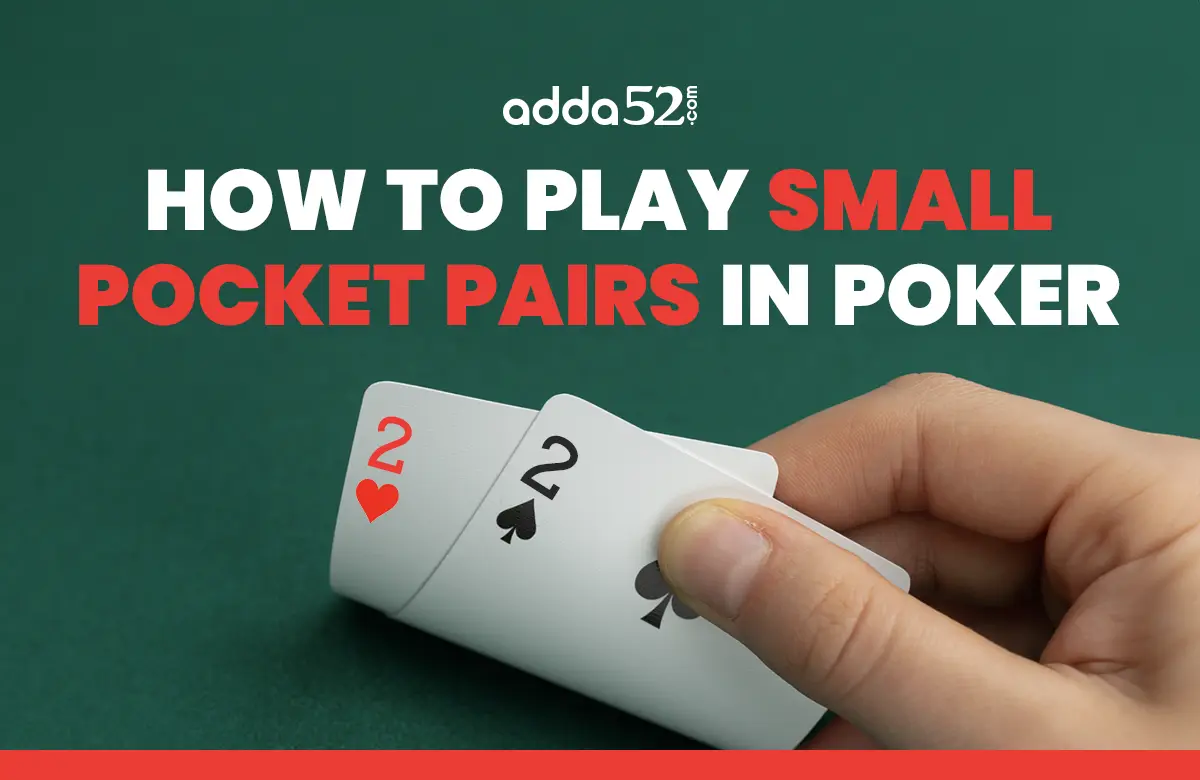
Introduction
Small pocket pairs require strategies, as they have challenges and opportunities. They can turn your low hand into a strong three of a kind. But is it worth risking all your money? When to Call, Raise, or Fold? What do you do if you are sitting in an early position? If you are stuck with these questions, read about pocket pairs and their strategies.
Objective
The objective is to learn the nitty gritty of small pocket pairs and strategies to win with them.
What are Small Pocket Pairs?
Small pocket pairs are low-ranked paired cards ranging from 2-2 to 6-6. Because of their low value, you need a strategy to play them. However, they do have the potential to make strong hands like Three of a Kind on the Flop.
How to play small pocket pairs with 30bb+
When you have lots of chips, like 30bb+, it is reasonable to start with small pairs. However, raising is not recommended, as small pairs don’t perform well.
You can call if others have raised, but keep factors like your positions at the table. Let’s look at different situations and how you can play pocket pairs:
If the first player raises, folding small pairs is better, meaning the player might have stronger hands than you. If you have a bigger stack like 80bb and the tournament is easy, you can try Calling as the risk of others raising is low.
Let’s talk about position. If an early position raises and you are in the middle position, you should Fold. You can start calling as you move closer to the Dealer’s button. If you are a small blind, you can call unless the Big Blind is aggressively raising.
How should we incorporate small pairs into our open-raising range?
Here are scenarios where you have to you can incorporate small pairs:
- If you are playing with an Ante, you can raise from any position and with any pair. If you are playing without an ante, be cautious. You can start raising only if you are sitting in a LoJack Position. Don’t raise if you are sitting in an early and middle position.
- If your opponents are aggressive players, you should Fold the small pair irrespective of your position. You can raise them if they are passive players.
Playing small pocket pairs post-flop
Bet for value if you make Three of a Kind after The Flop. This means you want as much money from the pot as possible. The game gets trickier if you don’t get Three of a Kind after the Flop. You can continue playing by calling if you have pairs like 8-8 to A-A. If you have small pairs like 22 or 33, it is best to Fold them as they have limited potential to improve.
If your opponent checks, it’s best to check back; betting would turn into bluffing, which is unnecessary.
How to play small pocket pairs with less than 30bbs
The set is less valuable, and you will end up Folding on the Flop. You should call and raise less, as the benefit of hitting a set is less. You may also have to check and Fold too many Flops. Small stacks are good for going all-in. Also, just because it's profitable doesn’t mean you will always go all-in. Consider how strong your opponent is, their playing tendencies, and the value of your chip in the tournament.
Frequently Asked Questions
Should you 3 bet small pocket pairs?
It is advisable to avoid 3-bets with small pocket pairs, as they don’t perform well post-flop. Instead, focus on calling or folding based on the position or stack size.
How often do small pocket pairs win?
Small pocket pairs win around 30-35% of the time.
What is the lowest pocket pair?
2-2 is the lowest pocket pair.
Conclusion
Playing a small pocket pair is crucial. You have to consider factors like your position at the table and how your opponent is playing. You must also consider the stack size and avoid raising pre-flop. You can Raise after the Flop if you have a better hand, like three-of-kind. Learn more about poker, its strategies, and hand rankings to improve your game. Always practice to master your game.
